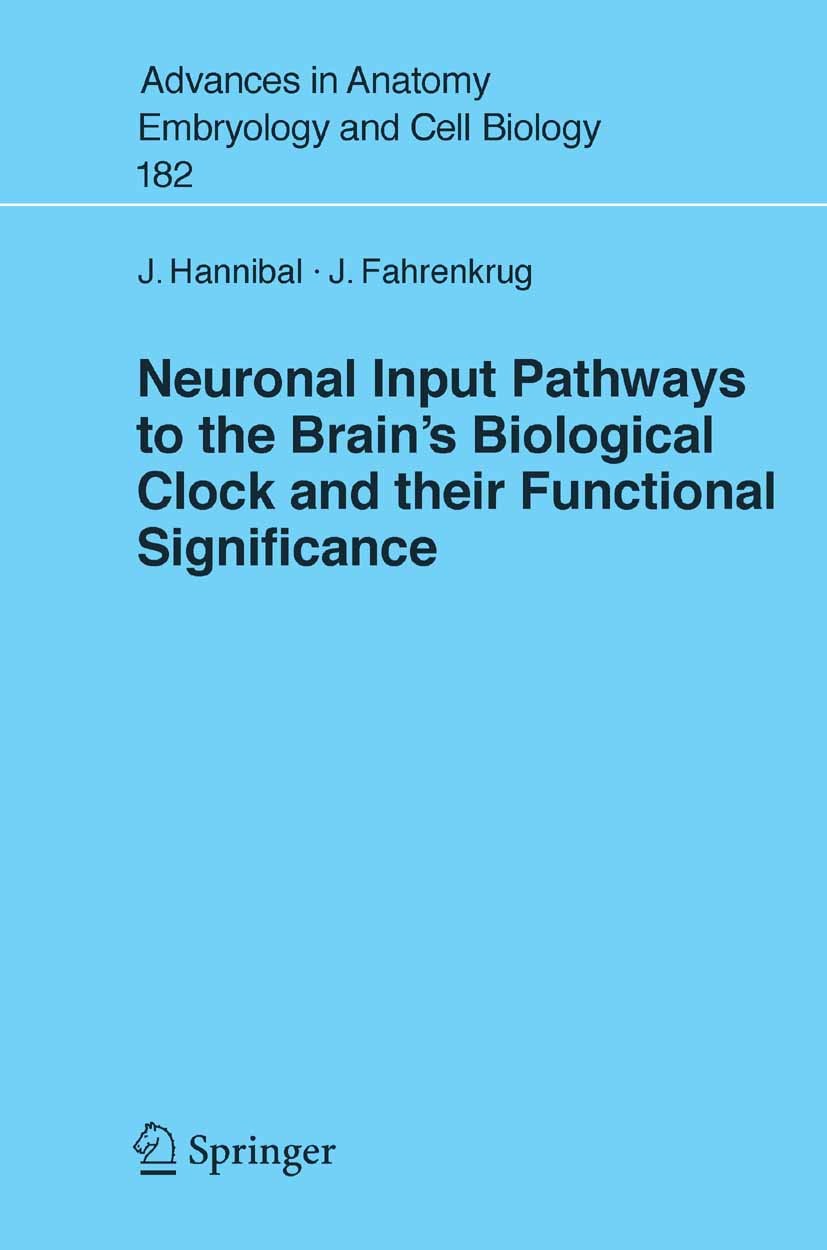| 书目名称 | Neuronal Input Pathways to the Brain‘s Biological Clock and their Functional Significance |
| 编辑 | Jens Hannibal,Jan Fahrenkrug |
| 视频video | http://file.papertrans.cn/665/664268/664268.mp4 |
| 概述 | Includes supplementary material: |
| 丛书名称 | Advances in Anatomy, Embryology and Cell Biology |
| 图书封面 |  |
| 描述 | .Rhythmic changes in physiology and behaviour within a 24 h period occur in living organisms on earth to meet the challenges associated with the daily changes in the external environment. The circadian pacemaker responsible for the temporal internal organisation and the generation of endogenous rhythms of approximately 24 h is located in the hypothalamic suprachiasmatic nucleus (SCN) in mammals. The endogenous period generated by the pacemaker is close to, but generally not equal to 24 h and the biological clock therefore needs to be daily adjusted (entrained) by external cues. The daily alteration of light and darkness due to the rotation of our planet on its own axis in relation to the sun is the most prominent "zeitgeber" which adjusts the phase of the circadian rhythms to the astronomical day length, a process known as photoentrainment. In mammals, light is perceived only through photoreceptors located in the retina. Light information is mediated to the SCN via the retinohypothalamic tract (RHT) by activation of the classical photoreceptor system of rods and cones and a more recently identified system of intrinsic photosensitive retinal ganglion cells (ipRGCs) using melanopsin |
| 出版日期 | Book 2006 |
| 关键词 | Circadian Rhythm; Eintrainment; Melanopsin; NPY; PACAP; Retinohypothalmic tract; Serotonin; Suprachiasmatic |
| 版次 | 1 |
| doi | https://doi.org/10.1007/3-540-27789-7 |
| isbn_softcover | 978-3-540-27788-0 |
| isbn_ebook | 978-3-540-27789-7Series ISSN 0301-5556 Series E-ISSN 2192-7065 |
| issn_series | 0301-5556 |
| copyright | The Editor(s) (if applicable) and The Author(s), under exclusive license to Springer-Verlag GmbH, DE |
 |Archiver|手机版|小黑屋|
派博传思国际
( 京公网安备110108008328)
GMT+8, 2025-12-28 14:41
|Archiver|手机版|小黑屋|
派博传思国际
( 京公网安备110108008328)
GMT+8, 2025-12-28 14:41


